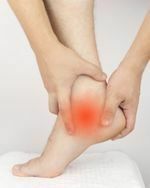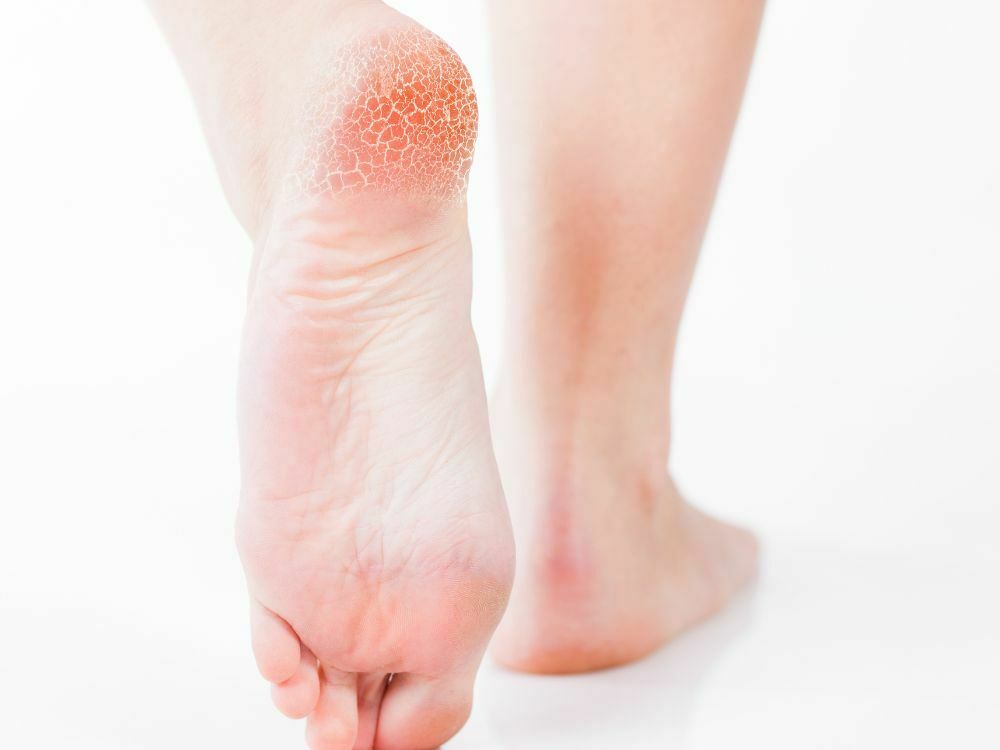Description de la douleur au talon, ou Fasciite Plantaire, et de l’épine de Lenoir

La fasciite plantaire est l’une des causes les plus fréquentes de douleur au talon. Cette condition douloureuse touche des milliers de Québécois chaque année et peut considérablement affecter votre qualité de vie. À la Clinique Podiatrique de l’Avenir, nos podiatres expérimentés offrent des solutions efficaces pour soulager votre douleur et vous aider à retrouver votre mobilité.
Qu’est-ce que la fasciite plantaire?
La fasciite plantaire est une inflammation du fascia plantaire, une bande de tissu fibreux épaisse qui relie l’os du talon aux orteils. Ce fascia joue un rôle essentiel dans le soutien de la voûte plantaire et absorbe les chocs lors de la marche.

Lorsque le fascia plantaire est soumis à une tension excessive ou répétée, de micro-déchirures peuvent se former, causant inflammation et douleur. Si cette condition n’est pas traitée, elle peut évoluer vers la formation d’une excroissance osseuse appelée épine de Lenoir (ou épine calcanéenne), visible uniquement par radiographie.
Symptômes de la fasciite plantaire
Les symptômes caractéristiques de la fasciite plantaire incluent :
- Douleur vive au talon lors des premiers pas le matin ou après une période de repos
- Sensation de « clou » ou d’aiguille sous le talon
- Douleur qui diminue après quelques minutes de marche, puis revient après une activité prolongée
- Sensibilité accrue à la palpation du talon
- Douleur qui s’intensifie après (et non pendant) l’exercice
- Raideur au niveau du talon et de la voûte plantaire
Causes et facteurs de risque
Plusieurs facteurs peuvent contribuer au développement d’une fasciite plantaire :
- Problèmes biomécaniques : pieds plats, pieds creux ou déséquilibre de la démarche
- Surcharge pondérale : le surplus de poids augmente la pression sur le fascia
- Station debout prolongée : surtout sur des surfaces dures
- Chaussures inadéquates : semelles trop plates ou manque de support
- Activité physique intense : course à pied, sports avec sauts répétés
- Âge : la condition est plus fréquente entre 40 et 60 ans
- Tension du tendon d’Achille : mollets tendus ou tendon d’Achille raccourci
Diagnostic
Lors de votre consultation, notre podiatre procédera à un examen clinique approfondi comprenant :
- Une évaluation de vos symptômes et de votre historique médical
- Un examen physique avec palpation de la zone douloureuse
- Une analyse de votre démarche et de la biomécanique de vos pieds
- Une échographie du pied pour visualiser l’état du fascia et détecter d’éventuelles déchirures
- Une radiographie si nécessaire, pour vérifier la présence d’une épine de Lenoir ou exclure d’autres pathologies
Traitements offerts à notre clinique
Le plan de traitement sera personnalisé selon la sévérité de votre condition, votre mode de vie et vos objectifs. Nos podiatres disposent de plusieurs options thérapeutiques :
Traitements conservateurs
- Conseils de chaussures : recommandations pour un chaussage adapté offrant un bon support
- Exercices d’étirement : programme d’exercices pour le fascia plantaire, le tendon d’Achille et les mollets
- Bandages thérapeutiques : taping pour supporter la voûte plantaire et réduire la tension sur le fascia
- Orthèses plantaires sur mesure : pour corriger les déséquilibres biomécaniques et redistribuer la pression
Traitements médicaux
- Anti-inflammatoires : médication orale pour réduire l’inflammation
- Infiltration de cortisone : injection échoguidée pour les cas aigus et très douloureux
- Traitement au PRP : injection de plasma riche en plaquettes pour stimuler la guérison naturelle des tissus
- Attelle de nuit : pour maintenir le fascia en position étirée pendant le sommeil
Chirurgie
La chirurgie est rarement nécessaire et n’est envisagée qu’en dernier recours, lorsque tous les autres traitements ont échoué après plusieurs mois. Selon notre expérience, moins de 1% des patients nécessitent une intervention chirurgicale.
Épine de Lenoir : est-ce la cause de ma douleur?
Contrairement à une croyance populaire, l’épine de Lenoir elle-même n’est généralement pas la source de la douleur. Cette excroissance osseuse est plutôt un signe que le fascia plantaire a été soumis à un stress répété pendant une longue période. Le traitement vise donc l’inflammation du fascia et non l’épine osseuse, qui n’influence pas le pronostic ni le plan de traitement.
Combien de temps dure la guérison?
La durée de guérison varie selon la sévérité de la condition et la rapidité de la prise en charge. La majorité des patients constatent une amélioration significative dans les 6 à 12 semaines suivant le début du traitement. Les cas chroniques peuvent nécessiter plusieurs mois de traitement. Un suivi régulier avec votre podiatre permet d’ajuster le plan de traitement selon votre évolution.
Prenez rendez-vous
Ne laissez pas la douleur au talon limiter vos activités quotidiennes. Plus la fasciite plantaire est traitée tôt, meilleurs sont les résultats. Contactez la Clinique Podiatrique de l’Avenir pour une évaluation complète de votre condition.
Clinique Podiatrique de l’Avenir – Laval
1565 Boul de l’Avenir, Suite 212, Laval, QC H7S 2N5
Téléphone : 450-668-5501
Contact your podiatrist
Contactez notre clinique de podiatre à Laval, we will be delighted to meet you.
The information provided in this web site is not intended to be a substitute for medical examination, diagnosis or treatment. The material is provided for information purposes alone.

